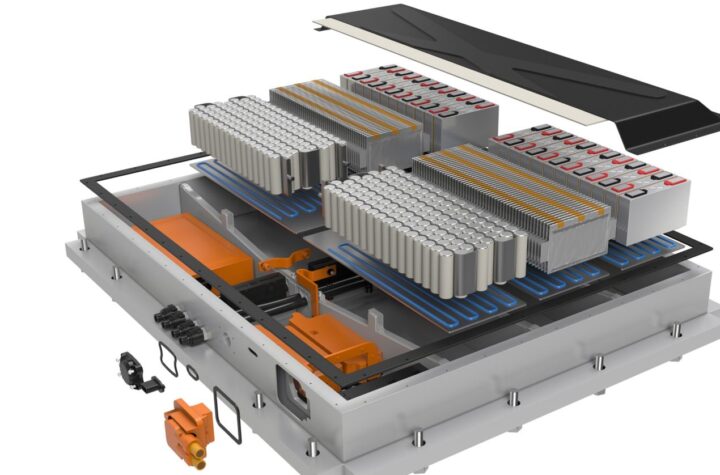
Web3 is becoming an increasingly important concept in the world of
automotive industry as brands like Mercedes and Ford have been filing
trademark applications to join the party. With Web3, companies can create
unique experiences for their customers and build brand loyalty with a
younger demographic.
However, building a successful Web3/NFT program is not as simple as just
jumping on the bandwagon. Brands like Porsche have already launched their
NFT collections, but initially didn’t succeed as there was no “clear
utility, value exchange, or community feedback”. But the German auto
manufacturer was able to quickly pivot and find success after listening to
the community. It’s a great example of learning by doing but it also begs
the question, what does it really take for auto brands to build out
successful Web3/NFT programs?
Firstly, it’s essential to learn about Web3 and start with the basics. This
includes familiarizing the brand with Web3, identifying who will drive these
initiatives, and laying out all of the potential options. This involves
understanding what sort of partnerships make sense, what marketplaces are
out there to consider (e.g. OpenSea, Rarible), and educating the company on
the benefits and possibilities of Web3.
Secondly, brands must identify the value of Web3 initiatives and ensure they
are aligned with the overall brand mission and vision. It’s crucial to have
clear direction and understand how Web3 can bolster or accomplish the
brand’s goals. Moreover, brands need to offer a clear value-exchange, aside
from capital, and think about the required time, energy, and people that are
also needed to be successful.
Finally, understanding engagement is essential. Brands need to understand
how they will engage with the community and whether they have a platform to
allow for community discussions and feedback. It is also necessary to think
about the expectations in 12-24 months and, if necessary, how to
course-correct or pivot.
Porsche is an excellent example of a brand that has successfully built a
Web3/NFT program. They launched their NFT collection in 2021, which included
unique digital collectibles that commemorated their racing history. The
collection was a hit with both Porsche enthusiasts and the larger Web3
community, and they offered clear utility and value exchange.
Web3 is becoming an increasingly essential concept in the automotive
industry. Brands like Mercedes and Ford are filing trademark applications,
but to build successful Web3/NFT programs, companies must start with the
basics, identify the value of their initiatives, and understand how to
engage with the community. By following these steps and learning from
successful brands like Porsche, automotive brands can create unique
experiences and build brand loyalty with a younger demographic.
Matt Maher is a renowned futurist, speaker, and the founder of M7
Innovations. With years of experience guiding executive teams at Fortune 100
companies, he has an impressive track record of conceptualizing, presenting,
and executing innovative solutions in the ever-changing media and
technological landscapes. His areas of expertise include Web3, the
metaverse, AR, VR, AI, IoT, and voice technology. Matt is also a valuable
asset to the international advisory boards of CHANEL and the Glimpse Group
(NASDAQ: VRAR).
Previously, Matt served as the VP of Innovation at Assembly, AdAge’s 2018
Agency of the Year, and as the Director of Content at Interpublic Group’s
Initiative. He has been instrumental in providing guidance to some of the
world’s biggest auto brands on building successful Web3/NFT programs. He
believes there’s a lot to learn from brands like Porsche, who launched an
NFT collection that lacked clear utility, value exchange, or community
feedback. Matt is adept at demystifying the technology and breaking it down
into a digestible form, making him a valuable resource in the field of
Web3/NFT programs. Currently, major brands like Mercedes and Ford are
seeking his guidance to capitalize on this new way of creating experiences
for their customers and building brand loyalty among a younger demographic.
Automotive Industries (Ai) caught up with Matt and asked: As a futurist and
expert in Web3/NFTs, what are some of the key benefits that you see for
automotive brands to adopt this technology?
Maher: One of the biggest benefits on the brand side is loyalty. When
building a Web3 program auto brands can leverage non-fungible tokens (NFTs)
and platforms like Discord as tools for further engagement and brand
loyalty. By providing a platform that gives consumers direct access to a
brand, it creates opportunities for two-way dialogue and more meaningful
communication. At the same time, there will be more logistical benefits
further down the road where people will start using tools like smart
contracts on the blockchain, for instance, to lease or purchase a car. While
they may not be commonplace yet, those types of interactions and exchanges
are ripe for innovation as more and more of them take place in the digital
domain.
Automotive Industries: Porsche recently launched an NFT collection, but you
mentioned that it lacked clear utility and value exchange. Can you expand on
what you think automotive brands should consider when launching their own
NFT collections?
Maher: For Porsche, they were actually able to pivot quickly by listening to
the community and acting on that direct feedback. Overall, that’s key for
any brand getting into this space. What Porsche did was double down on
in-real life (IRL) experiences and brand access, all while treating their
NFT holders the same as a real Porsche owner. The most impressive part was
they did this at a price point that was 1/100th the cost of an actual
Porsche. They hit the nail on the head by being more inclusive and
cultivating long-term relationships-not just with current enthusiasts and
loyalists, but also with future brand lovers. The point is to get people on
board now so they can be a part of that journey from the very beginning-it’s
aspirational but that’s what people love. It builds a strong connection
between the brand and the consumer that could very well last for decades.
Automotive Industries: Web3 is still in its early stages, and many people
may not understand its potential impact on industries like automotive. How
do you envision Web3/NFTs changing the automotive industry in the next 5-10
years?
Maher: It really goes back to the benefits we were just discussing and I see
it unfolding in two different ways that reflect the market. First, for the
more luxurious and high-end auto brands, it’s an excellent tool to create
loyalty, build a sense of community, and ultimately drive more sales.
Second, for the more affordable auto brands, it will unfold in a more
logistical way as more dealerships eventually leverage Web3 tools like smart
contracts on the blockchain to handle the logistics of car buying. Overall,
any auto brand getting into Web3 will be able to layer those functionalities
over their current processes to make them much more efficient.
Automotive Industries: The use of NFTs has raised concerns around
sustainability and the environmental impact of cryptocurrency mining. How do
you think automotive brands can address these concerns as they explore the
use of NFTs?
Maher: It really comes down to doing your homework. Any brand diving into
Web3 shouldn’t just say we’ll accept bitcoin for a car, for instance, as
there are a lot of other blockchains like Ethereum and Polygon that are much
more environmentally friendly. When Ethereum went through “The Merge” last
year, they changed the consensus protocols from proof-of-work to
proof-of-stake. In other words, they had a major network upgrade that
completely changed how the blockchain verifies transactions. With a
proof-of-stake system now in place, Ethereum was able to reduce overall
energy consumption by more than 99%. That’s a powerful testament of the
ability for these crypto currencies to become much more sustainable now and
in the future.
Automotive Industries: What do you see as some of the potential challenges
for automotive brands to adopt Web3/NFTs, and how can they overcome these
challenges?
Maher: There are two major challenges for auto brands: Expertise and
Adoption. For the brands themselves, it’s very unlikely that they’ll have
the internal expertise to navigate a successful Web3 program. They need to
look for the right partners to help guide them. Secondly, consumer adoption
will be a challenge unless brands make it easier for them to engage and be a
part of their community. Brands like Nike and Starbucks are doing this well
by hiding the backend technology and packaging it up as an accessible,
intuitive, and user friendly experience. Even though those brands are in
completely different industries, there are still parallels and key lessons
to be learned. By looking at brands that are doing it well, auto makers can
leverage those strategies and apply them to their own Web3 initiatives.
Automotive Industries: With more automotive brands entering the Web3/NFT
space, how do you see competition shaping the development and adoption of
this technology in the industry?
Maher: There’s no one-size-fits-all approach with Web3. Therefore, there
won’t be a clear winner when looking through a traditional competitive lens.
Future adoption will be less focused on one-upping a competitor as it
doesn’t provide an adequate benchmark or strategic advantage. As the largest
auto manufacturers start to integrate Web3 tools into their workflows and
communications, I believe the success of any auto brand is to look at how
they’re leveraging these Web3 tools and adopt those best practices
accordingly. It really gives new meaning to the expression ‘a rising tide
lifts all boats.”










More Stories
The Advantages of Cloud-Based Fax Software for Businesses
40 YEARS OF SILICONE GROWTH IN AMERICA
DuPont materials science advances next generation of EV batteries at The Battery Show